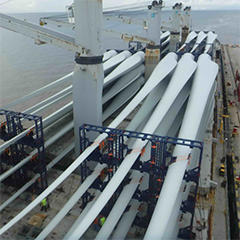The concept ‘vessel intake’ is at the forefront of windmill component design, and it will make possible more profitable logistics projects when different variables are considered under a collaborative approach.
The wind industry is facing a never-ending pressure on costs. All industry players, including first and second-tier suppliers, are developing different initiatives around cost reduction. As it happens today, logistics could be the last barrier in the automotive, or the food & beverage industries, but to overcome such a barrier, it is essential to implement a new and different approach.
Reducing logistics costs is something that almost all companies aim to do, and we all know that simply lowering costs is not a good long-term strategy. So what do we have left?
We need initiatives that bring a broader and more efficient strategic vision of the entire logistics chain. We should bear in mind that the transport of this type of component not only includes sea transport, but also land transport, different storage facilities, and all the necessary operations.
At this moment, in the current market, there are different initiatives to seek productive improvements, but only on a few occasions are the logistics considered. So, in general terms, logistics projects that have not been planned in advance can bring operational, or cost surprises. For this reason, it is necessary to design a logistics strategy and a proper action plan that can be incorporated into the whole process. So, with that aim in mind, a collaborative approach involving key third parties is an essential factor.
Don’t forget that transporting cargo from one point to another is quite easy. The added value will be, for example, in providing a well-planned logistical process, so that the cargo arrives at the destination such a way as to make the construction of the farm easier, or software solutions to provide the location of the cargo in warehouses and traceability



























